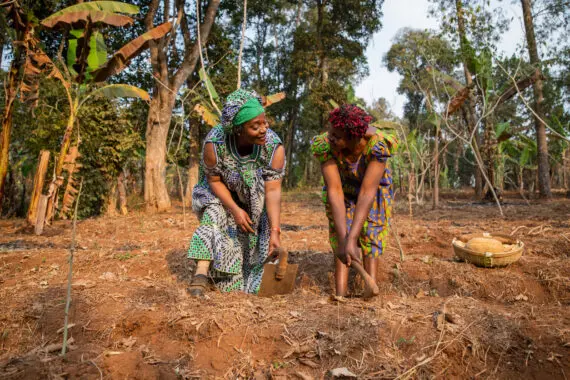“Factbox: Mines and hunger plague conflict-hit eastern Ukraine,” by Umberto Bacchi, Reuters
Eastern Ukraine, now in its fourth year of conflict between Russian separatists and the Kiev government, is now stricken with widespread food insecurity exacerbated by conflict. In the last year, the amount of food insecure people in the region has doubled to over 1.2 million. Eastern Ukraine’s conflict zones are also the third most mine infested region in the world. On top of this, 3.6 million people are in need of humanitarian assistance. To get food, collect pensions, and maintain family connections, almost one million people cross the frontlines each month. To do so, they must cross chaotic and slow checkpoints.
“The Silicon Valley paradox: one in four people are at risk of hunger,” by Charlotte Simmonds, The Guardian
Silicon Valley is plagued with food insecurity. According to the Second Harvest Food Bank’s data, 26 percent of people in the Silicon Valley Area are food insecure, or one in four. The Second Harvest Food Bank’s demand for food has increased by almost 50 percent. As the economy has grown and improved, so has food insecurity in Silicon Valley. This is most likely due to high tech companies and their employees high end businesses and apartments raising rents and food prices. For the majority of the population not working within the high-end tech economy, this makes life increasingly difficult to afford.
“Trump administration wants more people to work for food stamps,” by Tami Luhby, CNN
President Trump and the Department of Agriculture announced they would be looking to make more recipients work for government benefits such as food stamps. They would accomplish this by allowing states to take more direct control over their own SNAP benefit programs. President Trump and Agriculture Secretary Sonny Perdue are seeking to decrease what they call dependence on government. However, almost 60 percent of SNAP recipients of working age already have jobs, which has experts on both sides of the spectrum questioning the effectiveness of President Trump’s goal.
“Can a GM banana solve Uganda’s hunger crisis?,” by Alon Mwesigwa, The Guardian
Uganda has passed a law approving the eventual distribution of genetically modified bananas to help combat blight and disease which has made banana growers struggle in the last decade. Uganda also created an approval system for each company entering the nation to sell its genetically modified seeds. Many are unhappy, however, alleging this will cause Ugandan farmers to be beholden to large agribusinesses and cite fears of environmentally negative effects. Proponents have replied that the objections are fearmongering, and not based in science.
“Mass starvation is humanity’s fate if we keep flogging the land to death,” by George Manbiot, The Guardian
There are not enough resources to continue the current trends towards higher and higher meat and food consumption. The UN is predicting that the world only has 60 years of harvests left, and soil degradation is causing yields to drop on a full 20 percent of the world’s arable land. Meat consumption is also set to rise by 70 percent by 2030. The environmental destruction that comes along with population increases will be a disaster. In addition, land grabbers are taking land away from smallholder farmers and fishermen and consolidating it in larger farms, decreasing agricultural diversity and productivity.
“Conflicts, drought drive hunger despite strong global food supply,” by the UN News Service
Despite the world food supply being strong, and agricultural productivity rising, food insecurity and malnutrition are on the rise. This is mainly due to drought conditions and conflict. In East Africa and Mongolia, poor rainfall has inhibited harvests and caused food insecurity, especially in Somalia and Kenya. On the other hand, conflict has destroyed crops, displaced millions of people, and cut off millions from access to the basic food supplies they need to survive. Twenty nine of the 37 nations in need of food assistance are in Africa, a symptom of conflict spreading through the continent. In Yemen, 17 million people, or 60 percent of the population, are in need of urgent humanitarian aid.



